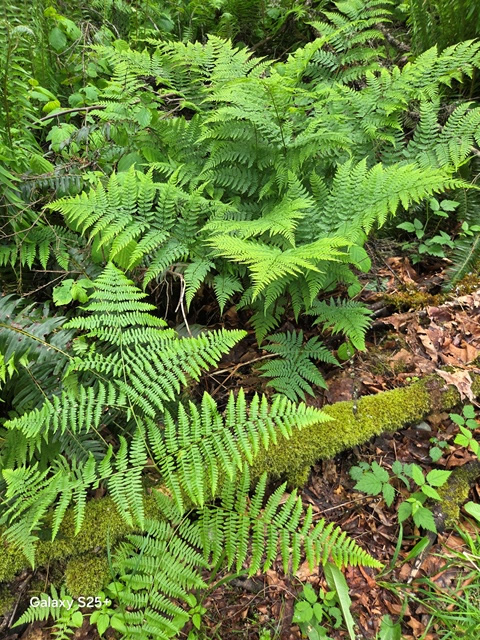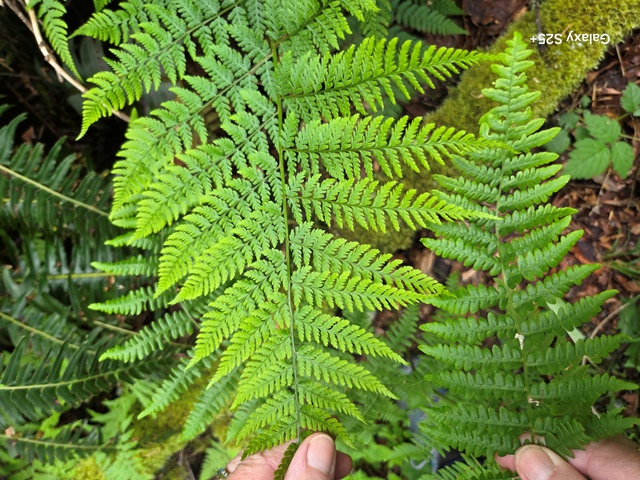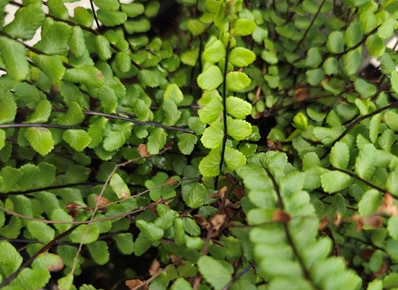Belcarra Garden Club
BC, Canada
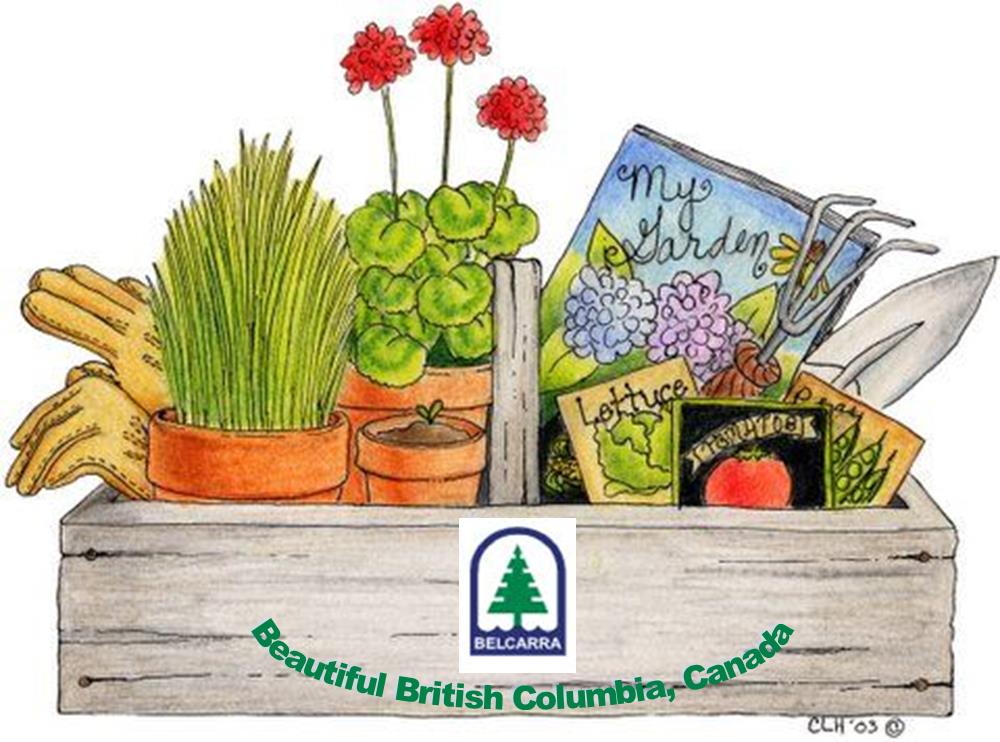
It's FERN-tastic!
Any walk along the roadside or down our trails in Belcarra, BC, affords a FERN-tastic vista of our lush green village! Sword ferns are perhaps the dominant species here, but it is fun to look closer and identify others as well.You will be surprised at the intricate differences, and the more you look, the more you will start to notice!
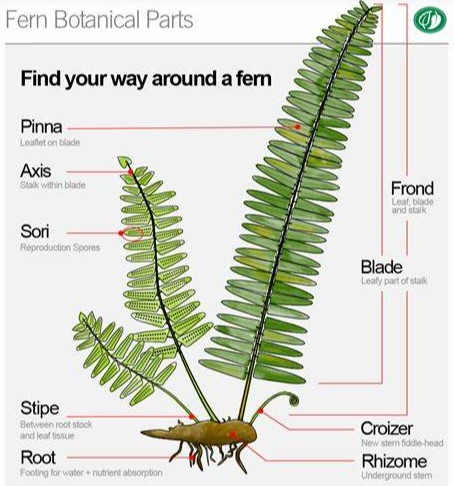 |
 |
|---|---|
Graphics from: PacificNurseries.com and ForestServiceUSDAgovernment |
Ferns have been around for over 350 million years, and some haven’t changed at all! Although ferns possess soft stems and true leaves, similar to flowering plants, they lack flowers. Pteridophytes, including ferns, horsetails, and club moss, reproduce via spores; in ferns, these are typically located on the undersides of the fronds. Accurate identification of some species requires a microscope, but general characteristics exist. The overall shape, leaf structure, and patterns of the sori (clusters of spore sacs) are important factors to notice. The following only “suggests” identifications.
Use iNaturalist (for on-the-spot IDs!), a book, or a website photo.
See how many you can identify on your next walk!
Wood Fern Family (Dryopteridaceae)
Western Sword Fern (Polystichum munitum): the most adaptable of our local ferns. *Large, erect, and toothed fronds that can grow to 1.5m (4.5 ft) tall *scaly reddish crown of rhizomes *alternate, pointed, leathery leaflets with a small, pointed lobe at the base *large sori in two rows on the underside.
My Notes: The Sword Fern is perhaps the most easily identified. The distinctive attribute is the stiff, leathery leaflets, which have been compared to a "sword-like shape".
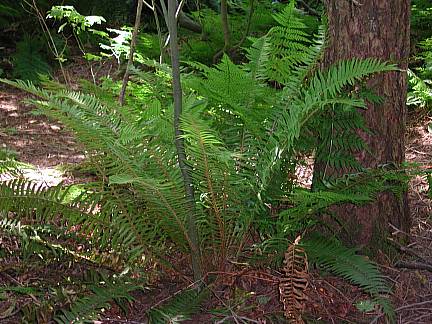 |
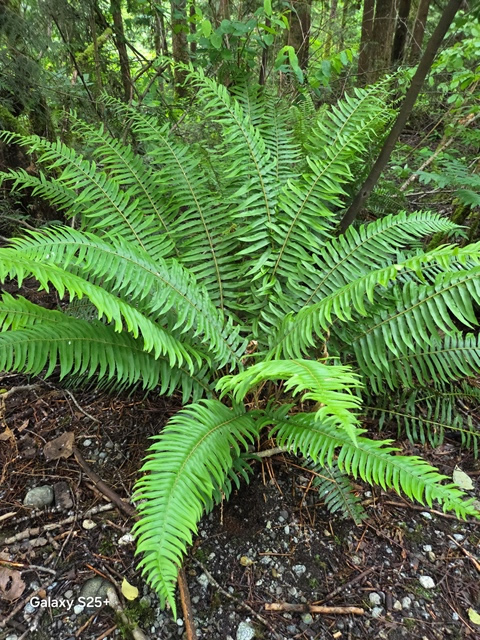 |
|---|
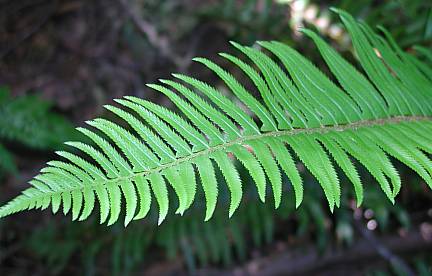
Lady Fern (Athyrium filix-femina): a feathery, graceful fern. * bright, yellow-green fronds to 2m (6.5ft) tall *fronds taper at both ends (diamond shape), being widest .25m (10”) in the middle
My Notes: The lacy appearance and the tapered shape (like a diamond) are good clues to a fern that is often about 1 meter tall ( 2 to 3 feet). Another distinguishing feature is that the pinnae grow right down to the end of the frond.
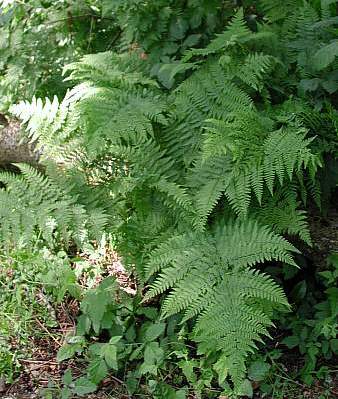 |
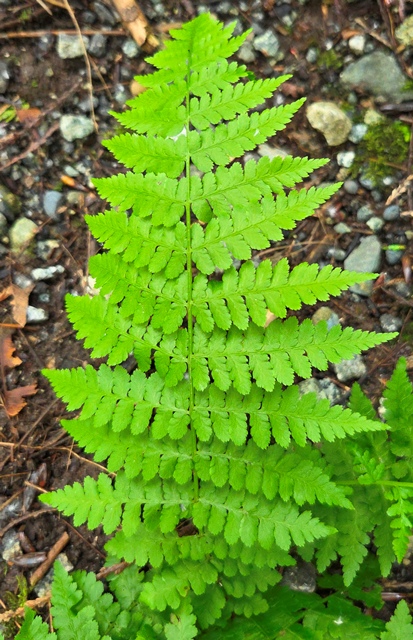 |
|---|
Shield or Male or Spiny Wood Ferns (there are many, various Dryopteris species!): similar to the Lady Fern but the fronds are triangular with a wide base *lowest pinnates are also triangular *lowest pinnae are a few inches above the ground *grow to about 1m (3ft)
My Notes (part1): The triangular shape was the clue for me.
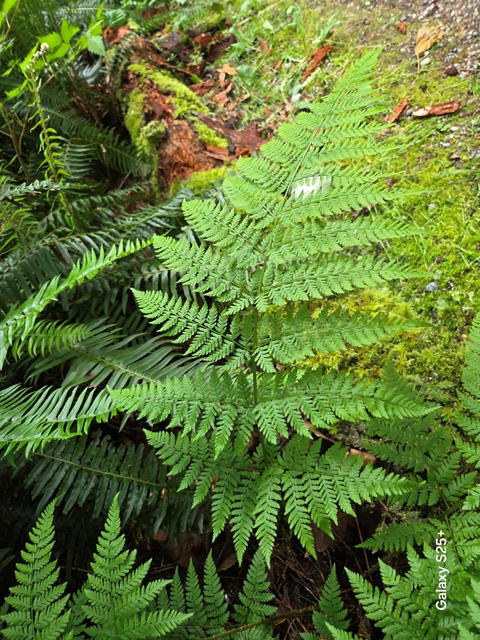 |
 |
|---|
My Notes (part2): The triangular shape was the clue for me but then I started to wonder if I was looking at a small bracken rather than a wood fern! That led me to look closer at the actual shapes of the leaflets. Was I surprised at the difference I hadn't noticed before! The wood fern has much more complex pinnae whereas the bracken has very rounded pinnae.
Bracken on the left, Wood Fern on the right |
Wood Fern on the left, Bracken on the right |
|---|
Licorice Fern (Polypodium glycyrrhiza): This smallish evergreen often grows on tree trunks and branches *its roots have a licorice flavor! * may be 70cm (2ft) or smaller * leathery leaves with rounded tips which are lobed to the midrib
My Notes: The fact that these ferns are growing on tree trunks was the significant factor.
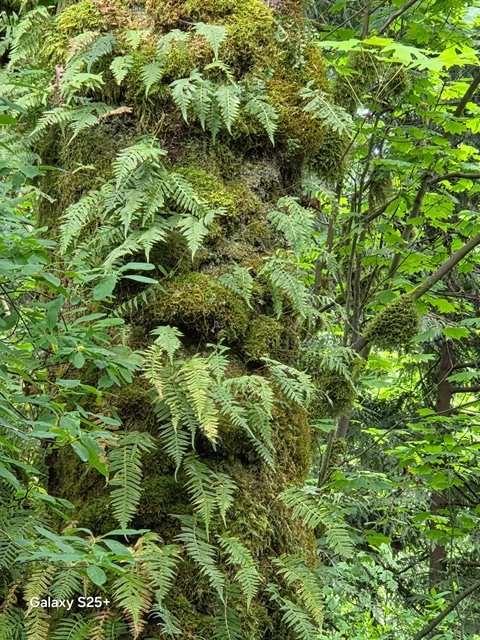 |
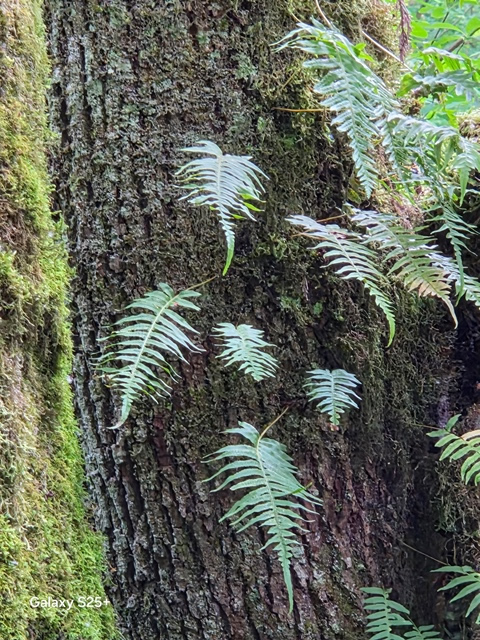 |
 |
|---|
Chain Fern family–Blechnaceae
Deer Fern (Blechnum spicant): one of our smaller ferns *has two distinct types of fronds, spore-bearing fronds are narrow and tube-like reaching 1m (3ft) high from the center with non-fertile fronds forming a low rosette 80cm (2ft) * fronds taper toward both ends
My Notes: This fern is quite smaller than our other common ferns. Also, a set of thin fronds stick up straight in the middle.
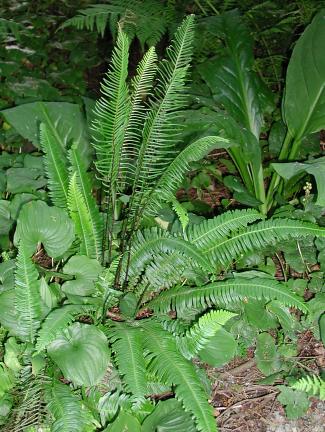 |
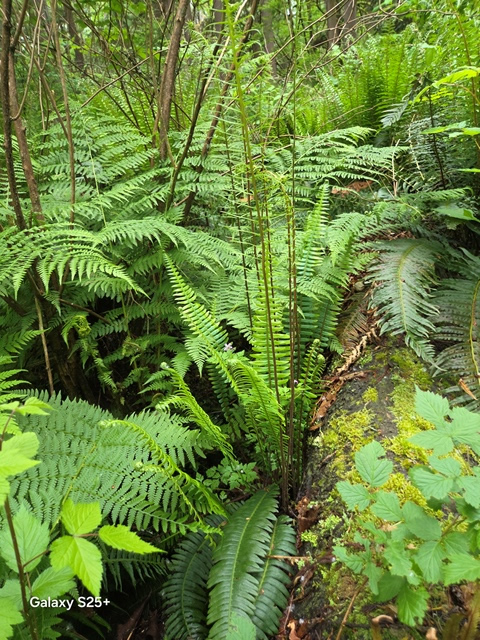 |
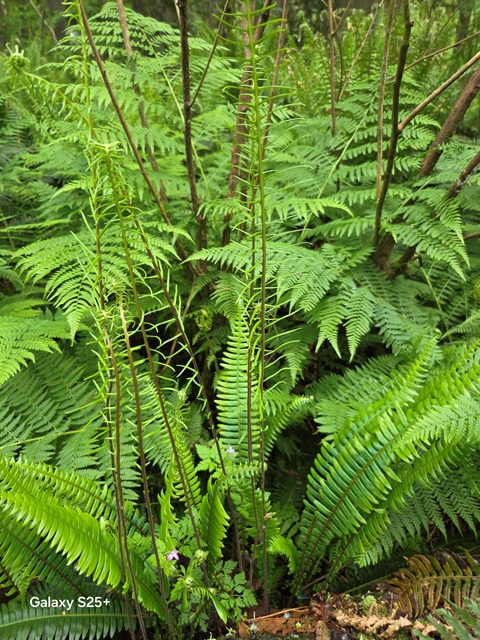 |
|---|
Bracken Fern family–Dennstaedtiaceae
Bracken Fern, (Pteridium aquilinum): large, solitary fronds reaching 1-2m (3-5ft) *blades and leaflets are triangular *stipes are very stout
My Notes: The keynote for this fern is that it is quite tall and although it may occur in groups, each one has a solitary, rather thick stem.
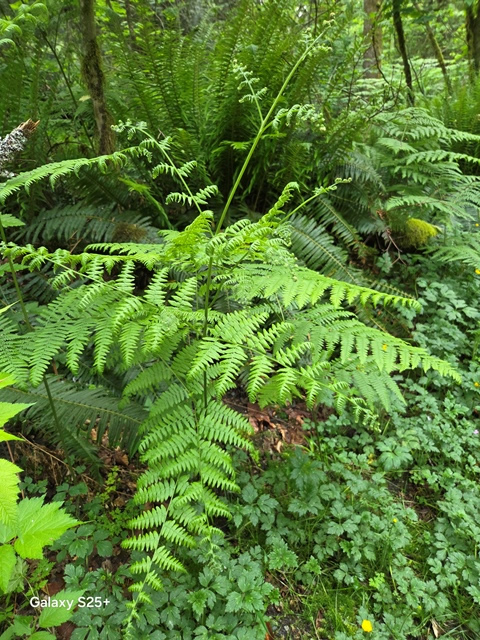 |
 |
|---|
Maidenhair Fern family—Pteridaceae
Maidenhair Fern (Adiantum pedatum): a delicate, palmately branched fern *fan shaped fronds *blackish, solitary stems *grows in clusters
My Notes: The palm-like arrangement of the many fronds, on dark brown stems, is the main identifier.
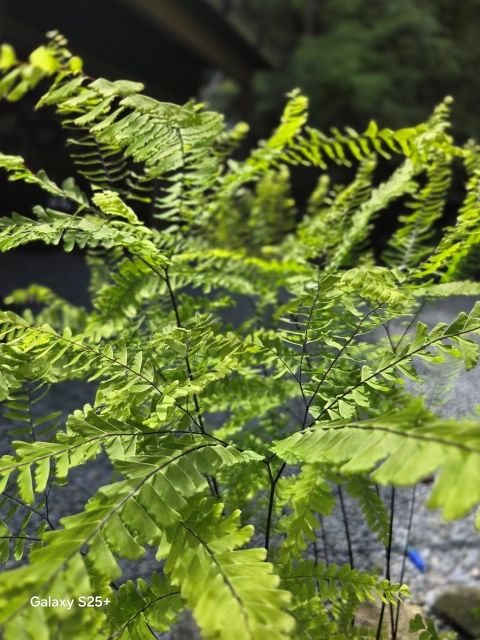 |
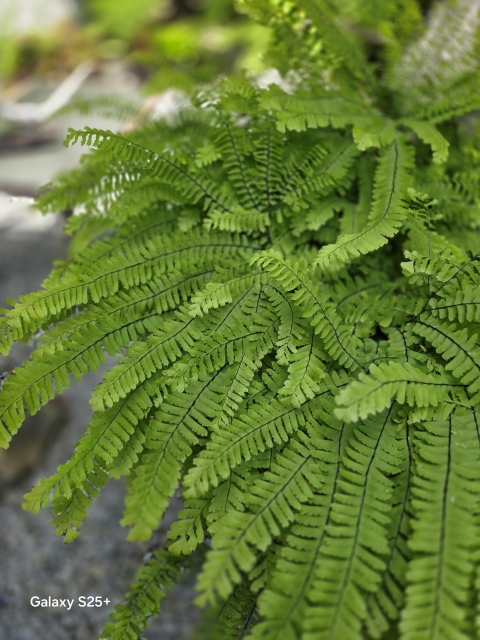 |
|---|
Oak Fern (Gymnocarpium dryopteris): *fronds are singular but they grow in clusters *a smaller sized fern, often under 40cm (1ft)*fronds are triangular
* stipe is shiny and straw colored
My notes: I didn't have a photo of my own for this one! This is a smallish fern and you often note that there are three triangular fronds.
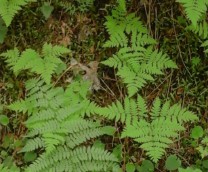 |
|---|
photo from NativePlants of the Pacific Northwest
Spleenwort family–Aspleniaceae
Maidenhair Spleenwort, Asplenium trichomanes: distinctive blades are very narrow *small roundish leaflets * stipes are reddish-brown at base
My Notes: The fronds look more like an ornamental plant than a fern to me! They are often found in quite damp areas.
photo from Native Plants PNW |
|
|---|
Related Links:
Native Plants PNW | An Encyclopedia of the Cultural and Natural History of Northwest Native Plants
https://nativeplantspnw.com/
Ferns - UBC Botanical Garden
https://botanicalgarden.ubc.ca/research-collections/plant-collections/ferns/
USDA Forest Service - Ferns
https://www.fs.usda.gov/wildflowers/beauty/ferns/structure.shtml
Intocascadia _ Ferns of the PNW
https://intocascadia.com/2016/10/28/an-easy-guide-to-ferns-of-the-pacific-northwest/
A local Douglas Fir Teaching Garden in South Vancouver
https://freethefern.ca/types-of-ferns/
13 common ferns of the PNW
https://pacificupperleft.com/common-ferns-of-the-pacific-northwest/
Electronic Atlas of the Flora of BC - Image gallery of (59) BC ferns
https://linnet.geog.ubc.ca/ShowDBImage/Gallery.aspx?oneword=fern&specrep=1&st=0
An in-depth look at the Sword Fern as well as a great introduction to how spores produce new plants
https://owlcation.com/stem/Facts-About-Ferns-and-the-Western-Sword-Fern-in-British-Columbia
The Forest Guild: harvesting licorice fern
https://theforestguild.com/plant-watch-licorice-fern-polypodium-glycyrrhiza/
iNaturalist: Oak Ferns
https://www.inaturalist.org/taxa/82572-Gymnocarpium-dryopteris
The Spruce: 35 Ferns for your Home or Garden
https://www.thespruce.com/types-of-fern-6665832
